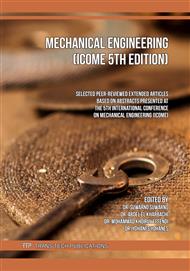p.3
p.11
p.19
p.29
p.39
p.49
p.61
p.67
p.75
Domestic Waste Incinerator Design with Bio-Mass Fuel
Abstract:
The high activity of offices, households or industries causes a lot of waste and it’s still a major problem that requires a solution with minimal impact. The combustion process is an alternative method of effective waste treatment. Incineration is a solid waste treatment process by burning at more than 800°C to reduce combustible waste that cannot be recycled, kill bacteria, viruses and toxic chemicals. Currently, the use of incinerator technology requires a lot of combustion energy from fuel oil or gas, so the operational costs are high and the the unit price is relatively very expensive. Incinerator’s design without a combustion engine, it is hoped that will save combustion energy to minimize operationals and production costs of the incinerator. The incinerator design process provides the type and yield of the incinerator, operating conditions, and the basic size of the reactor shaped of a cylindrical with a diameter of 24 cm and a height of 50 cm. The incinerator prototype construction uses assembly techniques and basic welding for metal materials and refractory cement casting. Incinerator’s Prototype testings show that the incinerator is capable to burn several types of waste, including: plastic, paper, wood, organic waste, etc. where the incinerator's combustion chamber temperature can reach 1091OC. The incinerator’s capacity will accommodate 10 kg of waste while the processing time varies according to the kind of waste.
Info:
Periodical:
Pages:
39-47
Citation:
Online since:
March 2023
Authors:
Keywords:
Price:
Сopyright:
© 2023 Trans Tech Publications Ltd. All Rights Reserved
Share:
Citation:



